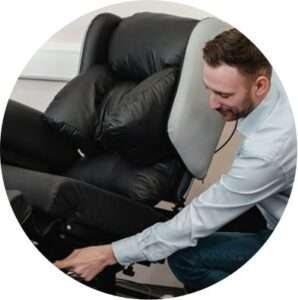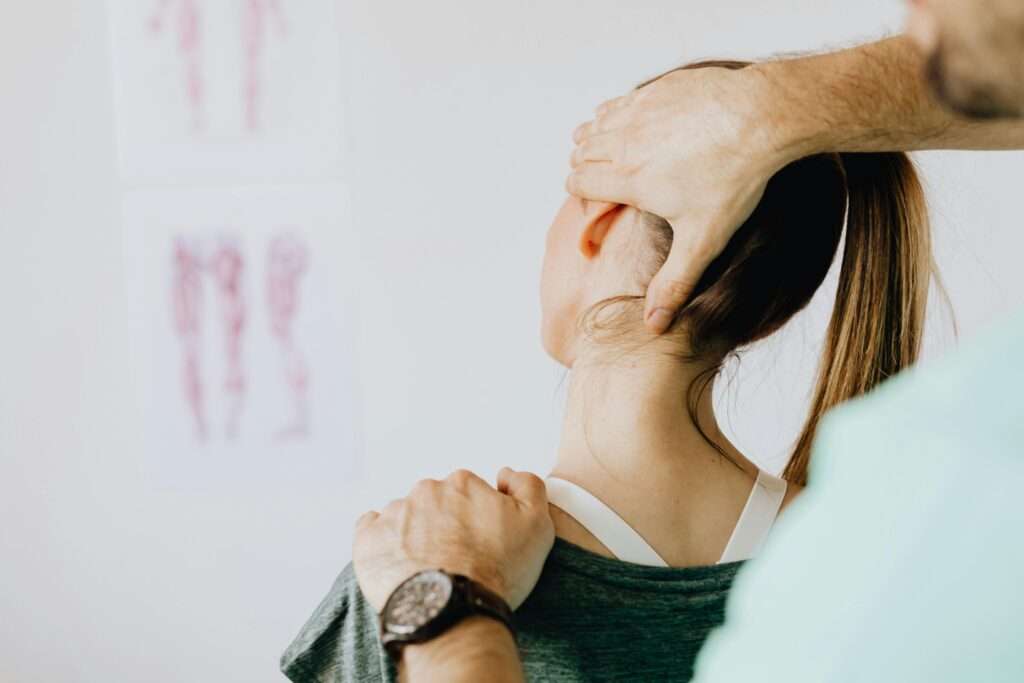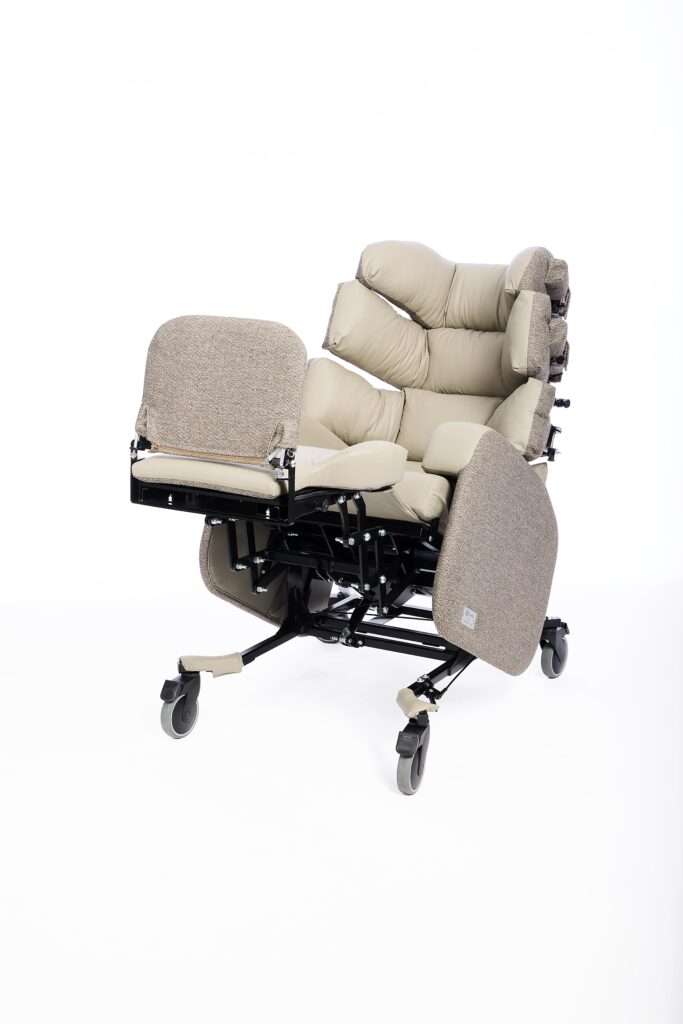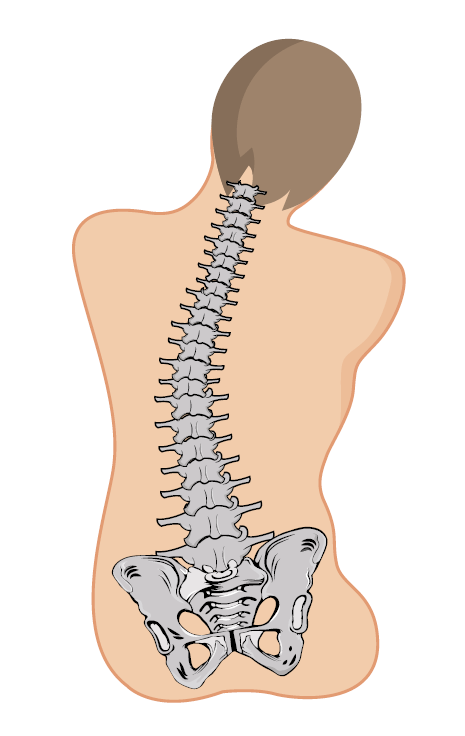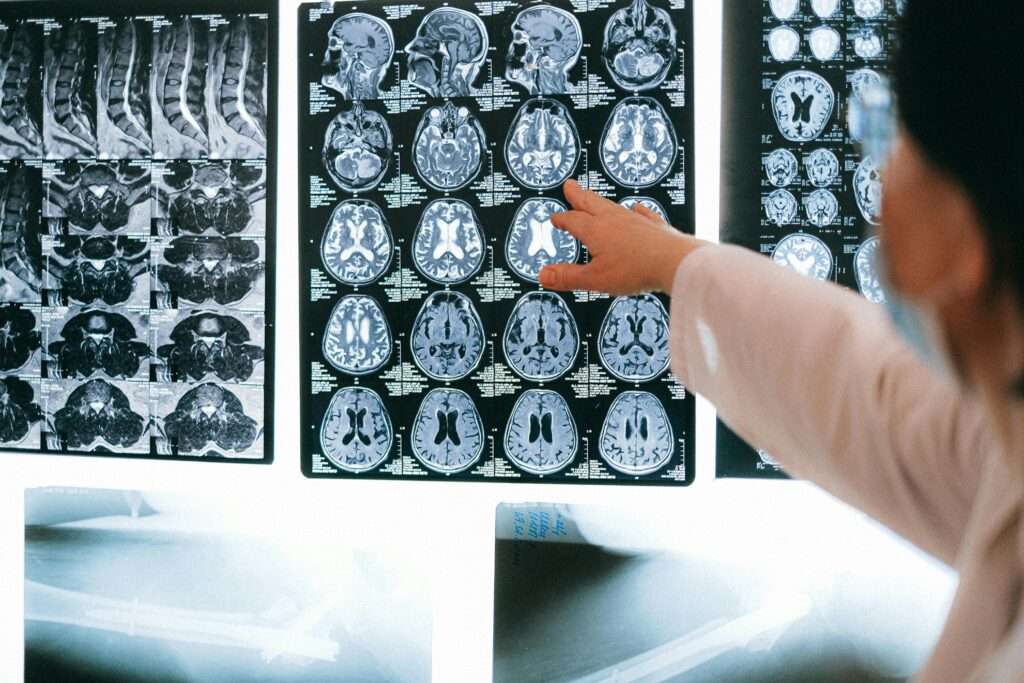One aspect of sitting posture that doesn’t get as much attention as it deserves is the neck, and how to support it properly. If adequate head support is not in place or poor posture is causing neck strain, this can cause neck and upper back pain which can be very debilitating.
This article looks at the different causes of neck pain and how to address this with specialist seating.
Jump straight to…
Causes of Neck Pain When Sitting
First of all, let’s look at what can cause neck aches and pains when sitting in a chair.
Poor Posture
We all know the typical office stereotype of someone leaning forward and hunched over a keyboard. This leads to a curved or ‘hunched’ posture, with the head leaning forward and rounded shoulders which causes tension and strain in the top of the back.
This can be made worse by a poorly setup workstation, with incorrect screen height and wrong keyboard height all contributing to poor posture.
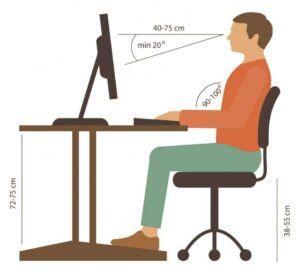
Well set-up work station
Stress and Anxiety
Stress and tension can contribute to neck pain. When we are more anxious and stressed, the body naturally goes into ‘fight and flight’ mode to prime us for action. This can even lead to changes in the body’s posture, as the shoulders curve forward and muscles tense up to respond to a potential threat. This should naturally subside, but prolonged stress and anxiety can lead to muscle aches and pains in the neck and shoulders due to increased tension.

Screens and phones
Too much time staring at smartphones and screens leads to muscle stiffness, as the neck muscles are under continual strain holding your head up as you look down at your phone. This has even been termed ‘tech neck’ due to its prevalence in today’s tech-driven society.
Getting away from screens and sitting with a straight back and looking directly ahead can counter the effects of prolonged phone and screen time.

The above causes are largely driven by lifestyle factors and apply to everyone regardless of whether they use specialist seating or not. The next group of causes relate more to underlying postural problems and conditions, so are more relevant to users of specialist seating.
Cervical spondylosis
Cervical spondylosis is a degenerative condition affecting the cervical spine (the neck area). This occurs when the vertebrae in the neck start to wear out, and is sometimes known as arthritis of the neck. It is quite a common condition in old age and can result in aches and stiffness in the neck, as well as feeling bumps or knots in the neck. Exercises to strengthen the neck muscles can help with this condition.
Kyphosis
A hunched or rounded posture can lead to kyphosis, a postural deformity with an excessive forward curve in the spine. This pulls the head and cervical spine in the neck forward, contributing to neck ache and pain.
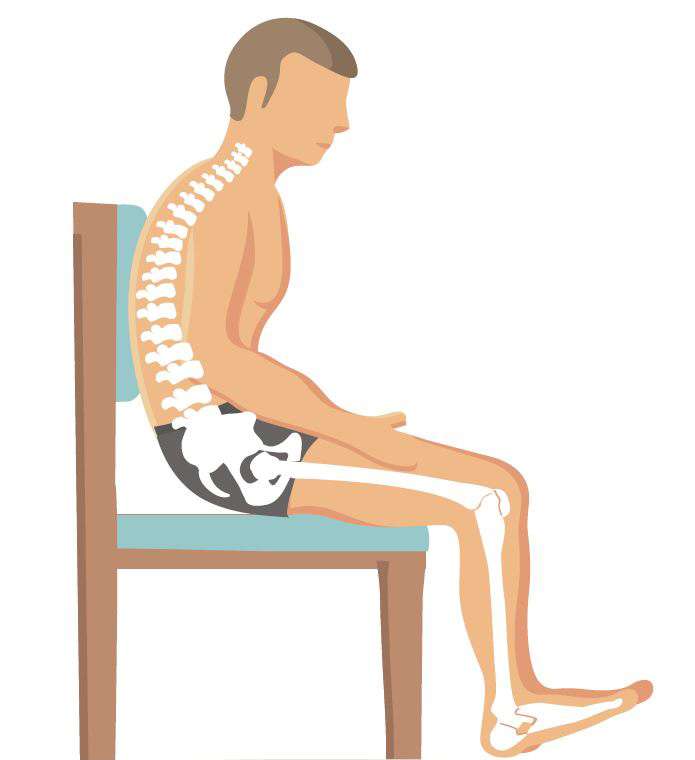
Kyphotic spine
Backrest Height
If the backrest is not high enough, the neck muscles have to work harder as there isn’t the support in place for the head.
Best Seating Features for Neck Pain
Lumbar Support
Proper lumbar support can help maintain the natural curvature of the spine, and in turn help the muscles in the neck area. An ergonomic backrest that supports the natural curve of spine all the way from the sacrum to the neck will minimise strain on the neck muscles.
Armrests
The right armrest height is important to keep the shoulders relaxed, and reduce tension in the neck and shoulders.
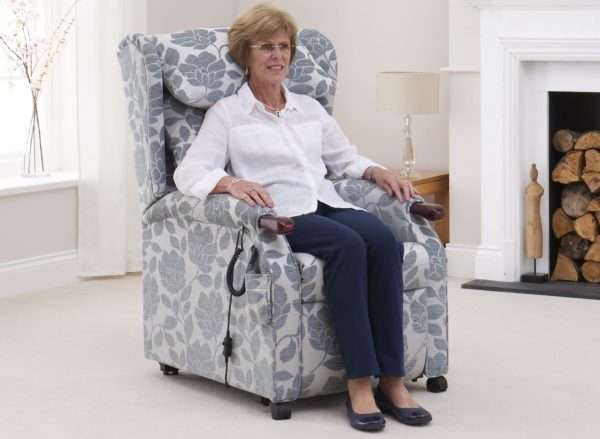
Head Support
Adjustable headrests can be very helpful for those with chronic conditions like arthritis or cervical spondylosis. The Multi Adjustable Headrest can be repositioned to cradle the patient’s head, giving them the best possible tailored support.
The horseshoe head cushion is an accessory in our Lento range, a great addition which hangs over the top cushion of the backrest on a weighted flap. This gives soft cushioning all the way round the head, supporting the neck and alleviating any neck aches and pains.
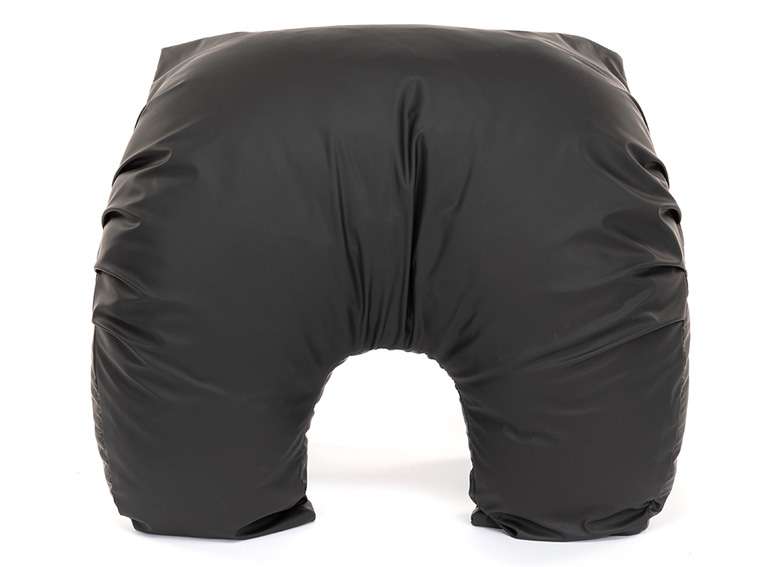
Horseshoe head cushion
Tilt-in-space
A kyphotic back can be treated by using tilt-in-space to tilt the angle of the patient back in the chair. Gravity allows the spine and head to rest back in the chair at this tilted angle, alleviating pressure on the spine and neck, rather than all the weight of the head and upper body going down through the spine.
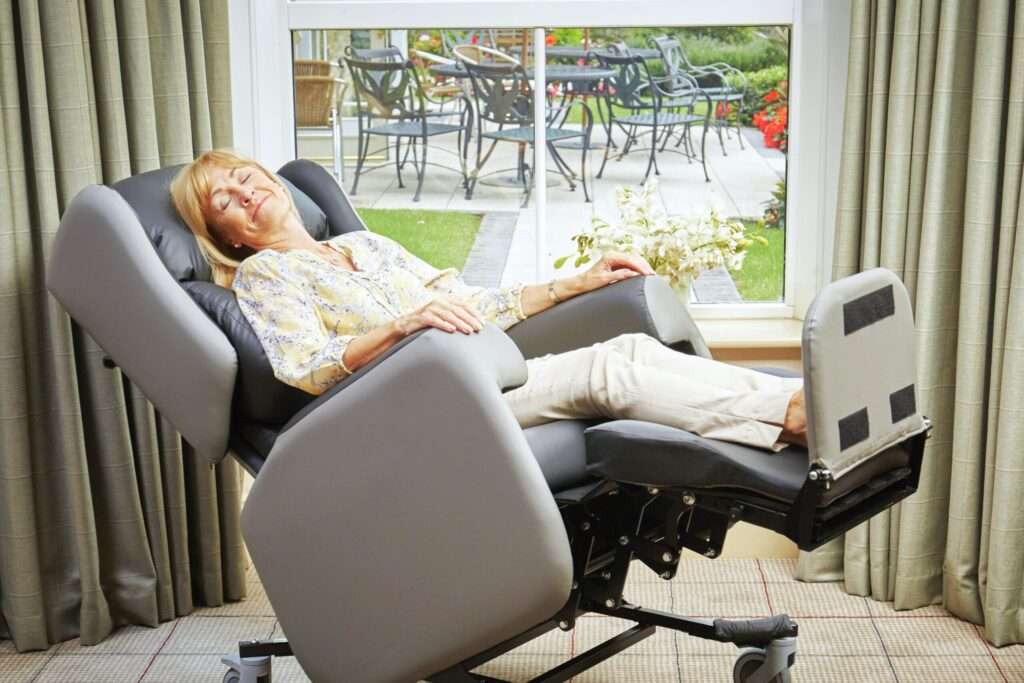
Tilt in space
Best Chairs in our Range for Neck Pain
High backed chairs support the upper back and shoulders. Our own HiBack chair has an adjustable lumbar support section, which can be moved up and down to support each individual person.
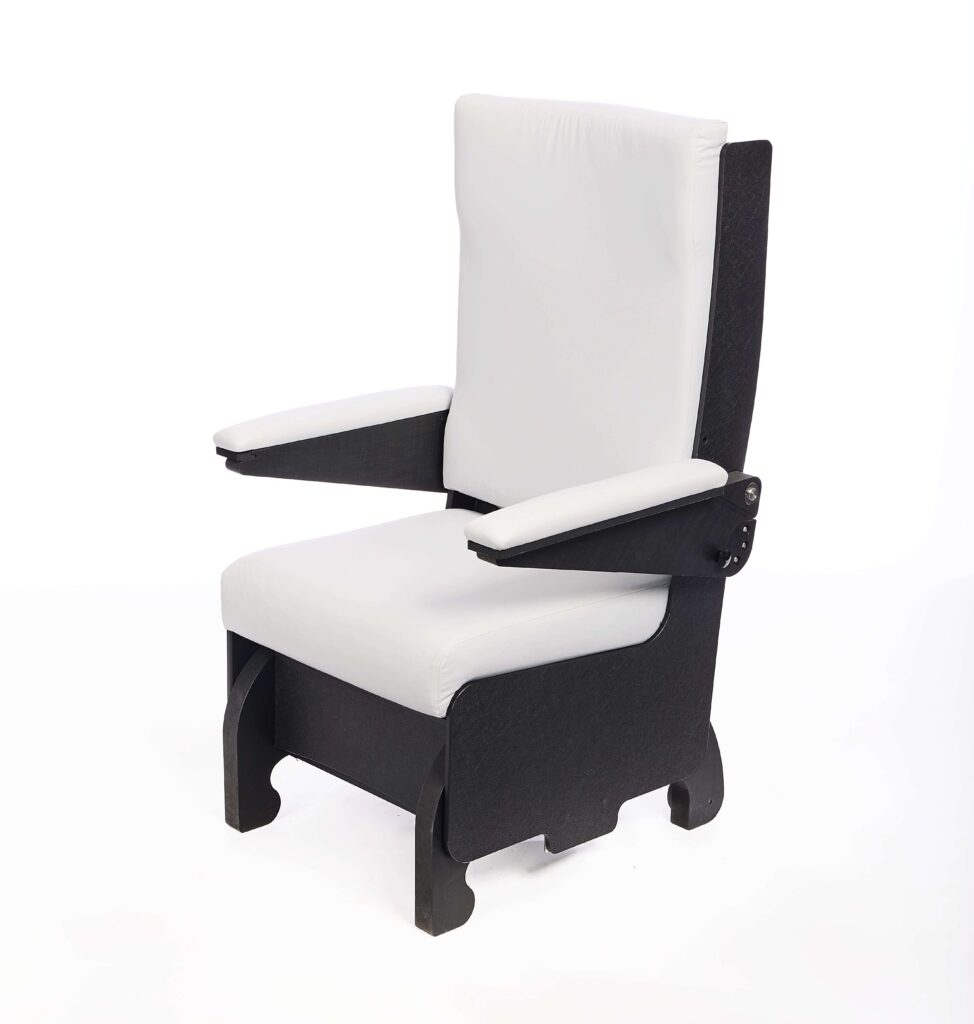
If you are looking for a chair with tilt-in-space, rise and recliner chairs are a great place to start, with standard or made-to-measure armchairs, or more specialist support with the Lento Mobile.
Head supports and different head cushions can all be integrated with the Lento range, and backrests are interchangeable, to help you find the best backrest to support your spine.
VELA activity chairs are perfect for adapting to different height workstations. The electric height adjustment can be activated at the touch of a button, and the large rolling wheels allow the chair to be easily moved around between different height work surfaces such as office desk and kitchen.
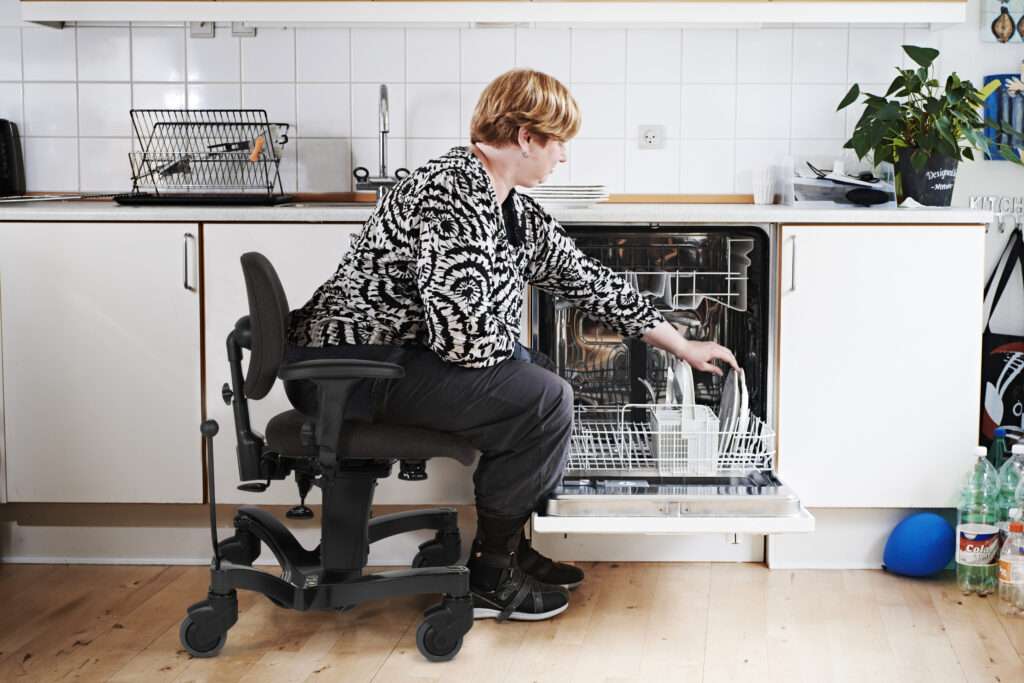
VELA Independence chair
Conclusion
Supporting clients with neck pain means finding the right balance between clinical effectiveness and day-to-day comfort. Proper postural support is essential, not only for reducing pain and muscle strain but also promoting long-term spinal health.
Our range of specialist seating has been developed with clinical input to meet a wide variety of postural and musculoskeletal needs. With features like tilt-in-space, adjustable head and lumbar supports, and interchangeable backrests, our chairs allow OTs and carers to tailor positioning for each individual user.
Frequently Asked Questions (FAQs)
Q: Which chairs are most suitable for clients with neck pain?
A: High-backed, fully adjustable chairs such as the Lento range and HiBack chair offer targeted support for the cervical spine, helping clinicians achieve optimal head positioning and reduce muscular strain during prolonged sitting.
Q: How can tilt-in-space assist clients with neck pain?
A: Tilt-in-space redistributes weight through the body, reducing load on the cervical and thoracic spine. This feature is particularly beneficial for clients with limited postural control or kyphotic postures, as it helps maintain alignment without effort.
Q: Are adjustable head supports important for managing neck pain?
A: Our adjustable and horseshoe headrests can be configured to provide gentle, stable support around the neck and head. This prevents overextension or flexion, minimises fatigue, and encourages neutral alignment.



